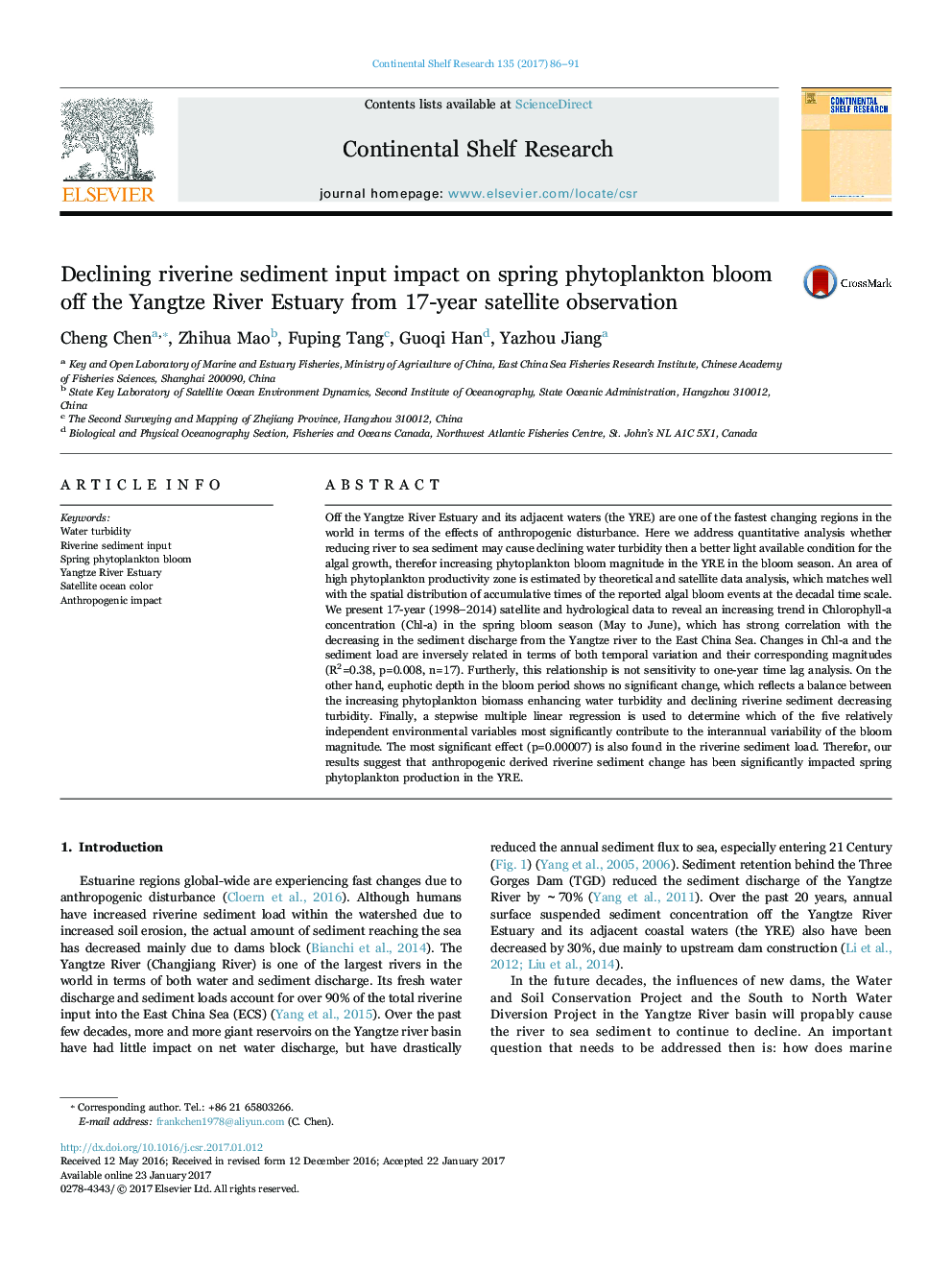| کد مقاله | کد نشریه | سال انتشار | مقاله انگلیسی | نسخه تمام متن |
|---|---|---|---|---|
| 5764490 | 1626078 | 2017 | 6 صفحه PDF | دانلود رایگان |
عنوان انگلیسی مقاله ISI
Declining riverine sediment input impact on spring phytoplankton bloom off the Yangtze River Estuary from 17-year satellite observation
ترجمه فارسی عنوان
کاهش تأثیر ورود رسوب رودخانه بر فیتوپلانکتون بهاره از ساحل رودخانه یانگ تسه از مشاهدات ماهواره ای 17 ساله
دانلود مقاله + سفارش ترجمه
دانلود مقاله ISI انگلیسی
رایگان برای ایرانیان
کلمات کلیدی
کدورت آب ورودی رسوب رودخانه ای، بهار فیتوپلانکتون شکوفا می شود رودخانه یانگ تسه، رنگ ماه اقیانوس، تاثیر انفعالی،
موضوعات مرتبط
مهندسی و علوم پایه
علوم زمین و سیارات
زمین شناسی
چکیده انگلیسی
Off the Yangtze River Estuary and its adjacent waters (the YRE) are one of the fastest changing regions in the world in terms of the effects of anthropogenic disturbance. Here we address quantitative analysis whether reducing river to sea sediment may cause declining water turbidity then a better light available condition for the algal growth, therefor increasing phytoplankton bloom magnitude in the YRE in the bloom season. An area of high phytoplankton productivity zone is estimated by theoretical and satellite data analysis, which matches well with the spatial distribution of accumulative times of the reported algal bloom events at the decadal time scale. We present 17-year (1998-2014) satellite and hydrological data to reveal an increasing trend in Chlorophyll-a concentration (Chl-a) in the spring bloom season (May to June), which has strong correlation with the decreasing in the sediment discharge from the Yangtze river to the East China Sea. Changes in Chl-a and the sediment load are inversely related in terms of both temporal variation and their corresponding magnitudes (R2=0.38, p=0.008, n=17). Furtherly, this relationship is not sensitivity to one-year time lag analysis. On the other hand, euphotic depth in the bloom period shows no significant change, which reflects a balance between the increasing phytoplankton biomass enhancing water turbidity and declining riverine sediment decreasing turbidity. Finally, a stepwise multiple linear regression is used to determine which of the five relatively independent environmental variables most significantly contribute to the interannual variability of the bloom magnitude. The most significant effect (p=0.00007) is also found in the riverine sediment load. Therefor, our results suggest that anthropogenic derived riverine sediment change has been significantly impacted spring phytoplankton production in the YRE.
ناشر
Database: Elsevier - ScienceDirect (ساینس دایرکت)
Journal: Continental Shelf Research - Volume 135, 1 March 2017, Pages 86-91
Journal: Continental Shelf Research - Volume 135, 1 March 2017, Pages 86-91
نویسندگان
Cheng Chen, Zhihua Mao, Fuping Tang, Guoqi Han, Yazhou Jiang,
